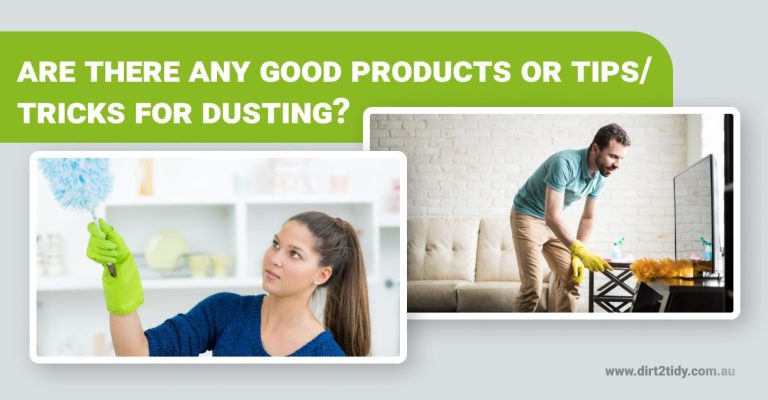Spring is when everyone cleans their houses. Carpet cleaning is a technique to maintain your house clean and prolong and improve your carpet’s life and performance.
Most people only clean their carpet when it’s stained. Nope. Every 12–18 months, carpets need cleaning. Warranty information may require more regular cleaning.
How to clean carpets?
Each carpet-cleaning process has pros and downsides. How do you choose a carpet cleaning method? Here’s a look at each cleaning method’s advantages and downsides to help you choose.
Carpets can be dry-cleaned or wet-cleaned. Dry carpet cleaning is no-moisture or VLM. Hot water extraction and wet carpet cleaning utilises water. Carpet steam cleaning is wet cleaning.
Why Matching Cleaning Methods to Carpet Fibres Matters
Not all carpets have the same cleaning needs—using the wrong method can leave them shrunken, faded, or damaged.
- Wool: Needs gentle care; too much water or scrubbing can cause shrinking or loss of softness.
- Nylon & Triexta: Handle steam cleaning well with the right pH balance, but neglect can dull colours or roughen fibres.
- Polyester: Resists stains but attracts oily dirt; regular vacuuming and occasional wet cleaning keep it fresh.
- Polypropylene (Olefin): Moisture-resistant but sensitive to heat; best with dry or low-temperature cleaning.
Dry Clean or Carpet Shampoo
Dry cleaning a carpet is surface cleaning, even if it uses some water. This is a fast-drying cleaning procedure for high-traffic areas. This isn’t ideal for a deep clean, but it’s great for upkeep.
Dry cleaning Using an absorbent compound, uses a carpet cleaning machine with counter-rotating brushes to push a powder with cleaning chemicals and solvents into the carpet fibres. The powder absorbs carpet filth and is cleaned up after 10 to 15 minutes.
The Risks of Aggressive Scrubbing
Scrubbing carpets too hard can damage fibres, make them look worn, and push stains deeper or spread them.
Better approach: Always blot gently, working from the outside in. This protects fibres, prevents spreading, and helps stains lift more easily.
Pros
simple cleaning procedure that doesn’t require any training. dries rapidly; the process takes around 20 minutes. A cost-effective, easy-to-use approach.
Cons
- Powder left in the carpet can pile up over time.
- Powder causes dust buildup.
- Can’t deep-clean carpet

Steam cleaning Carpets
Steam cleaning involves hot water extraction (HWE).Before you start steam cleaning, preparation is key for best results and to avoid any mishaps.
Begin by removing all furniture and objects from the area you plan to clean—empty floors make for easier, more thorough cleaning. Next, vacuum the entire carpet to lift away loose dirt and debris. If you spot any loose or frayed carpet fibres, trim them with scissors to prevent further damage during cleaning. Always test your chosen cleaning solution on a small, hidden patch of carpet to check for colourfastness—this simple step can save you from unexpected discolouration. For good measure, open windows or use fans to keep the area well-ventilated.
If anyone in your household is sensitive to cleaning products, consider providing masks or asking them to avoid the area while cleaning is underway. First, pre-condition the carpet. Soil and oil-based stains are liquefied. The machine sprays cleaning solution on the carpet and then vacuums up dirt and allergens. This product removes deep carpet dirt.
Truck-mounted and portable steam cleaners exist. Both strategies have advantages. With a portable machine, you may use it in condominiums or apartment complexes where the truck-mounted hose can’t reach. Truck-mounted units are superior for cleaning and should be used whenever possible.
How to Steam Clean Your Carpet: Step-by-Step
- Vacuum First: Remove loose dirt, focusing on corners and high-traffic areas.
- Pre-Treat Stains: Spot clean with the right remover, blot gently, and test on a hidden patch.
- Set Up Machine: Fill with hot water and cleaner, check attachments.
- Clean in Sections: Move slowly, overlap passes, and repeat on dirty spots.
- Rinse & Extract: Go over with clean water to remove residue and extract moisture.
- Dry Thoroughly: Open windows, run fans, or use a dehumidifier. Avoid walking until dry.
- Maintain: Vacuum often, clean spills promptly, and steam clean every 6–12 months.
If you’re worried about the cost of a professional carpet cleaning company, consider merely having high-traffic areas cleaned. The cleaner will clean around your bed or sofa so you don’t have to relocate them. Since you can’t see the carpet behind huge furniture, you shouldn’t clean it as often. If you move your furniture often, get the entire carpet cleaned.
Pros
- Deep-cleans carpets
- Use pressure, heat, and chemical concentrations
- Long-term cleaning solvent reaction
- A grooming or extraction wand agitates chemical reaction.
- Carpet cleaning procedure most utilised
- Manufacturers, specialists, and cleaners suggest it for yearly carpet maintenance.
Cons
It takes time to dry, but skilled technicians may decrease it with strong equipment. Most efficient equipment is pricey.Is more costly

Cleaning carpets yourself
You may have seen carpet cleaning devices in supermarkets and hardware stores or steam cleaners at department stores. There are several carpet-cleaning equipment on the market that may make you rethink hiring a pro.
A little spot cleaner might be beneficial if your carpet has lots of spills or has hard-to-clean places with carpet stain removal. This machine can’t clean an entire carpet, though.
How to Remove Pet Urine or Feces from Carpet
- Act Fast: Blot urine with paper towels or a cloth (don’t rub). For feces, use gloves to pick up solids.
- Pre-Treat: Mix mild dish soap with warm water or use an enzymatic cleaner. Test on a hidden spot first.
- Clean: Apply solution, working from the edges inward. Blot gently until the stain is gone.
- Rinse: Lightly rinse with clean water, then blot dry to avoid excess moisture.
- Deodorize: Sprinkle baking soda, let sit 15+ minutes, then vacuum to remove odours.
Carpet cleaning risks
DIY machines don’t get as hot as professional machines, which is required for good cleaning. This machine lacks the power of a professional machine, thus it can’t remove as much dirt and water from the carpet. Additionally, be mindful of the temperature of the water you use in your cleaning solution. Excessive heat can actually damage or fray carpet fibers, so stick to a warm—not hot—solution to protect your carpet while still getting the best results possible.
Your carpet should be barely moist after cleaning. If your carpet is still wet, your machine wasn’t strong enough. If your carpet is still wet after cleaning, use fans to speed up the drying process. Don’t walk on it or replace furniture until it’s completely dry.
To ensure a truly clean result, it’s important to rinse the carpet thoroughly after applying cleaner. Use clean water—either through a wet/dry vacuum or an extraction machine—to help remove any leftover cleaning solution or residue. Work in small sections to make sure the entire area is rinsed and excess moisture is extracted.
If you don’t have access to this equipment, dampen a cloth with clean water and blot the carpet until it no longer feels sticky or soapy. Then, use a dry, white cloth or paper towel to blot up as much moisture as possible. For stubborn dampness, place several layers of cloth or white paper towels over the cleaned spot and weigh them down; this will help absorb the last of the moisture.
Proper drying is crucial—skip this step and you risk lingering odors or even mildew. Always wait until the carpet is fully dry before returning furniture or letting anyone walk across your freshly cleaned floor.
How much cleaner will you need to add to the machine and how fast or slow you will run the machine over the carpet are other questions to consider before cleaning your carpet yourself.
Pros
First-time savings
You decide what to clean and when.
No appointment needed; flexible hours
Cheap stain and spot removers
Cons
You can’t clean as deeply as an expert since you lack their strength.
It takes awhile to dry if you do it yourself
Self-treated stains reappear.
Cleaning Carpets
Both professional and DIY carpet cleaning might cause problems. This includes:
- Mustiness or mould
- Backing water or brown streaks
- Cracking or shrinking can ruin carpet.
- If your carpet looks too wet, ask the cleaner to remove extra water, loan you an industrial-strength blower, or raise the carpet so they can dry the underlay.

Why Test Cleaning Solutions on a Hidden Spot?
- Prevent Discoloration: Some cleaners can fade or alter carpet dyes.
- Protect Fibres: Different materials react differently—testing avoids fraying or stiffness.
- Avoid Regret: A small trial shows results before treating the whole carpet.
Tip: If the hidden patch looks fine, you’re safe to proceed. If not, you’ve saved your carpet from major damage.
Safe carpet-cleaning chemicals?
Ask carpet cleaners what chemicals they will use when cleaning your carpets. Some chemicals can harm you and your family, so avoid them.
Unsafe chemicals include:
- Hydrofluoric acid glycol ethers
- Sodium, Bisulfate, Nitrilotriacetate, Acid Isobutane or Propane
- NaCl and NaOH
- Ask your carpet cleaner about alternatives to harmful chemicals. Several eco-friendly carpet cleaners employ safe Green Certified Products. If you clean yourself, check labels and prevent exposure.
Extra precautions for your household
Before you dive into cleaning, consider everyone in your home—two-legged, four-legged, or the perpetually sticky-fingered.
- Pets: Remove pets from the area being cleaned and make sure the cleaning products are pet-safe before letting them back in.
- Children: Use non-toxic and child-safe carpet cleaners, or simply keep little ones away from freshly cleaned carpet until the area is dry and residue-free.
- Allergies: If anyone in your home has allergies or sensitivities, select hypoallergenic cleaning solutions. Using a carpet cleaner with a HEPA filter can help trap dust and allergens for cleaner indoor air. Don’t forget to keep windows open or fans running for good ventilation during and after cleaning.
Taking these extra steps ensures your carpet cleaning is safe for everyone under your roof.
Avoiding Bleach and Harsh Cleaners
Bleach and all-purpose cleaners are too harsh for most carpets, often causing discoloration, fiber damage, or patchy spots that can’t be fixed.
Instead, choose cleaners made specifically for carpets, and look for eco-friendly or certified safe options to avoid toxic residues. When in doubt, always check the label or seek expert advice.
Carpet Maintenance
Focus on entrances and high-traffic areas to eliminate most soil transported into your house or workplace.
- Vacuum debris daily to prevent carpet damage.
- Spot-clean with white vinegar and clean often with clean water and blot the spill with paper towels.
- Depending on traffic, do dry or wet restorative cleaning. You can also use baking soda for stubborn stains, mix it with water in a spray bottle and apply on the area of the rugs .
- DIY Carpet Cleaning Solutions
- For a gentle yet effective clean, you can use a mild carpet cleaning solution or whip up your own with common household ingredients. Here are a couple of easy recipes:
- For Wool Carpets: Mix 1 teaspoon of wool laundry detergent with 1 cup of warm water.
- For Synthetic Carpets (like nylon or polyester): Combine 1 teaspoon of white vinegar with 1/2 cup of room-temperature water.
- Apply your chosen solution to the affected area, gently blotting with a clean cloth or paper towel—never rub, as that can push the stain deeper. Always test any solution on a small, inconspicuous patch first to avoid discoloration or damage.
- Most experts agree that your carpet will need a wet cleaning at some point. Using strong chemicals and incorrect upkeep might harm your carpet. Follow the right carpet maintenance and cleaning measures to extend its life.
Conclusion
Carpet cleaning isn’t just about looks—it’s about protecting your investment, improving indoor air quality, and keeping your home healthier. From choosing the right cleaning method for your carpet fibres to avoiding harsh chemicals, every step matters. Regular steam or dry cleaning, paired with smart maintenance, extends the life of your carpets and prevents costly damage.
Ready to restore your carpets to their best? Book a professional carpet cleaning today for fresher, longer-lasting floors and a healthier home.




